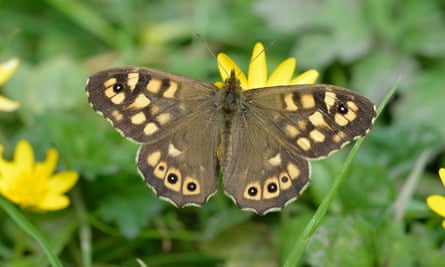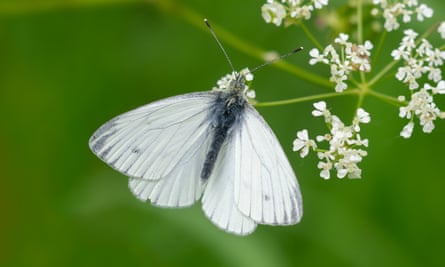A national “butterfly emergency” has been declared by Butterfly Conservation after the lowest Big Butterfly Count since records began.
An average of just seven butterflies per 15-minute count were recorded by participants in this summer’s butterfly count, the lowest in the survey’s 14-year history.
It was the worst year on record for once-ubiquitous species, including the common blue, small tortoiseshell, small white and green-veined white. Eight out of the 10 most-seen species have declined – in many cases dramatically – over the count’s history. Previous lowest-ever numbers of butterflies-per-count were logged in 2022, 2021 and 2020.
Butterfly Conservation is calling for the government to declare a “nature emergency” and ban insect-killing neonicotinoid pesticides, with no exceptions. Britain and the EU banned neonicotinoids in 2018 but the UK government has authorised an exemption for the pesticides to be used on sugar beet every year since 2021. Before the election, Labour promised to ban all neonicotinoids.
Richard Fox, head of science at Butterfly Conservation, said: “The previous lowest average number of butterflies per count was nine in 2022, this latest figure is 22% lower than that, which is very disturbing. Not just that, but a third of the species recorded in the Big Butterfly Count have had their worst year on record, and no species had their best. The results are in line with wider evidence that the summer of 2024 has been very poor for butterflies.
“Butterflies are a key indicator species; when they are in trouble we know that the wider environment is in trouble too. Nature is sounding the alarm call. We must act now if we are to turn the tide on these rapid declines and protect species for future generations.”
Crashes in flying insect populations including beetles and wasps have been widely observed during the summer after a prolonged wet and cold first half of the season.
But experts say the declines in butterflies and other flying insects appear to be more than seasonal fluctuations relating to bad weather.
Although the gatekeeper was the most-seen butterfly in the 2024 count, over the 14 years of recording its numbers have fallen by 32%. There have been similar long-term declines for other species in the top 10 including the small white (down 19% over 14 years), peacock (down 30%), speckled wood (down 38%) and green-veined white (down 65%).
The only butterfly to do significantly better than 2023 was the ringlet, whose caterpillars feed on grass and benefits from damper years. Its numbers increased by 85% on last summer but over 14 years its abundance has plummeted by 47%.

In total, more than 85,000 citizen scientists recorded 935,000 butterflies and day-flying moths over three weeks from 12 July, down almost 600,000, equivalent to more than a third of 2023’s total. In 9,000 counts, participants failed to see a single butterfly or moth, the highest number of zero-counts in the citizen science programme’s history.
Butterfly Conservation is asking people to sign its open letter to the environment secretary, Steve Reed, calling for a complete ban on neonicotinoids.
Fox said: “When used on farmland, these chemicals make their way into the wild plants growing at field edges, resulting in adult butterflies and moths drinking contaminated nectar and caterpillars feeding on contaminated plants. Many European countries have already banned these chemicals, it’s time for the UK to follow suit and put the natural world first. If we don’t act now to address the long-term drivers of butterfly decline, we will face extinction events never before seen in our lifetime.”
A spokesperson for the Department for Environment, Food and Rural Affairs said: “Nature underpins everything and we must protect our butterflies and other pollinators. That is why we are committed to deliver for nature and will change existing policies, including banning the use of those neonicotinoid pesticides that threaten vital pollinators.”
The 10 most-seen butterflies in the 2024 Big Butterfly Count

Species, number counted, 14-year trend
1. Gatekeeper, 190,413, -32%
2. Meadow brown, 177,844, -15%
3. Large white, 138,424, +2%
4. Small white, 112,814, -19%
5. Peacock, 50,847, -30%
6. Red admiral, 47,109, +28%
7. Ringlet, 44,278, -47%
8. Speckled wood, 30,112, -38%
9. Comma, 24,498, -20%
10. Green-veined white, 18,951, -65%
Source: theguardian.com


